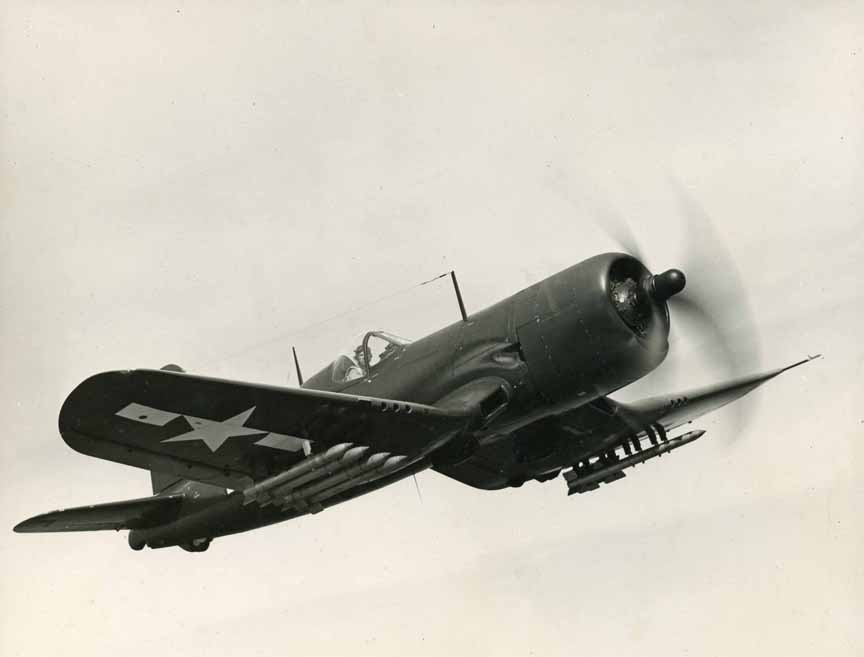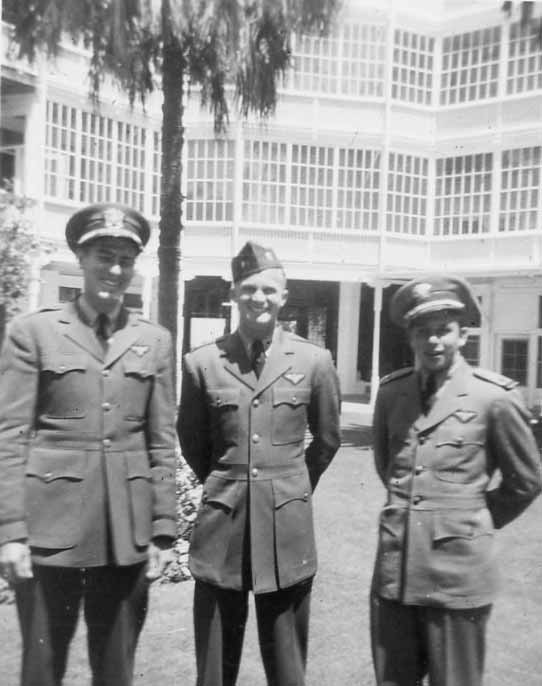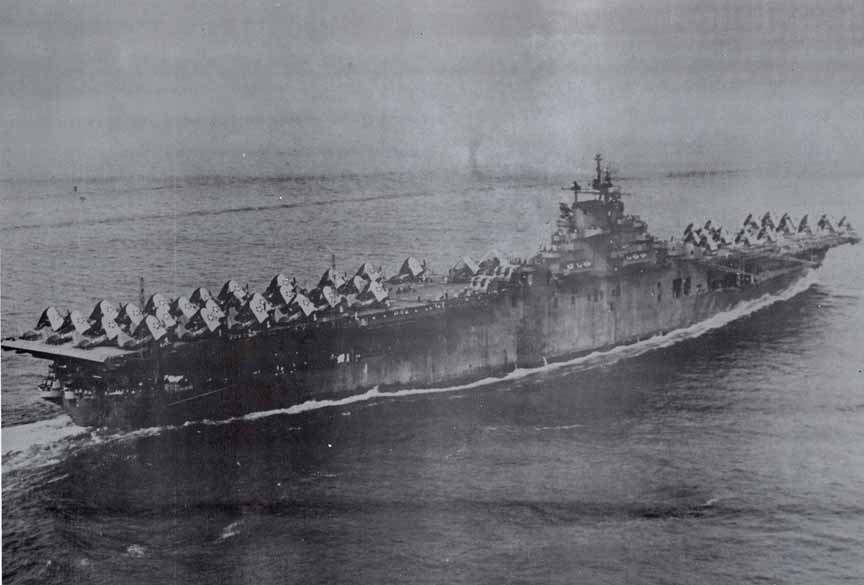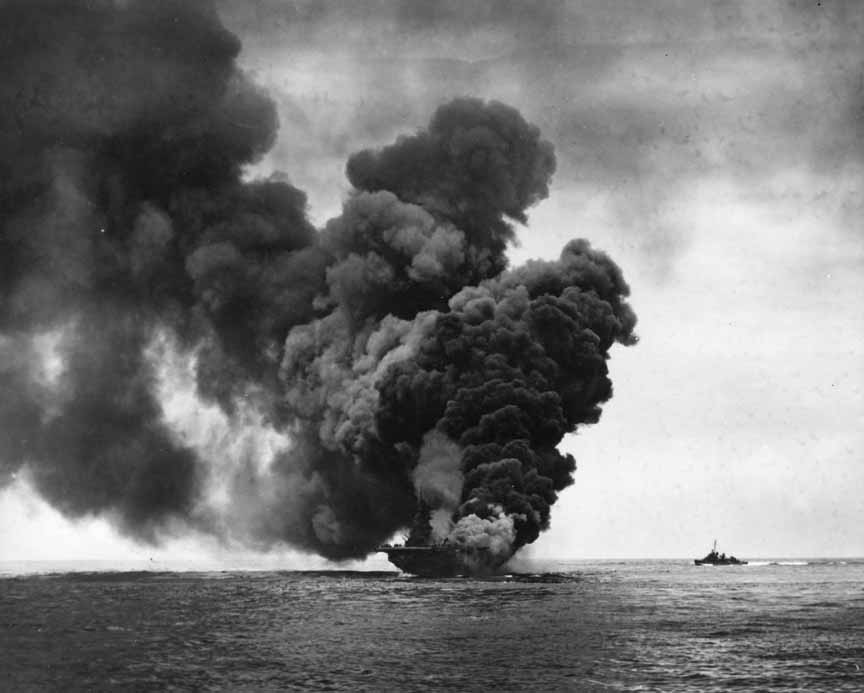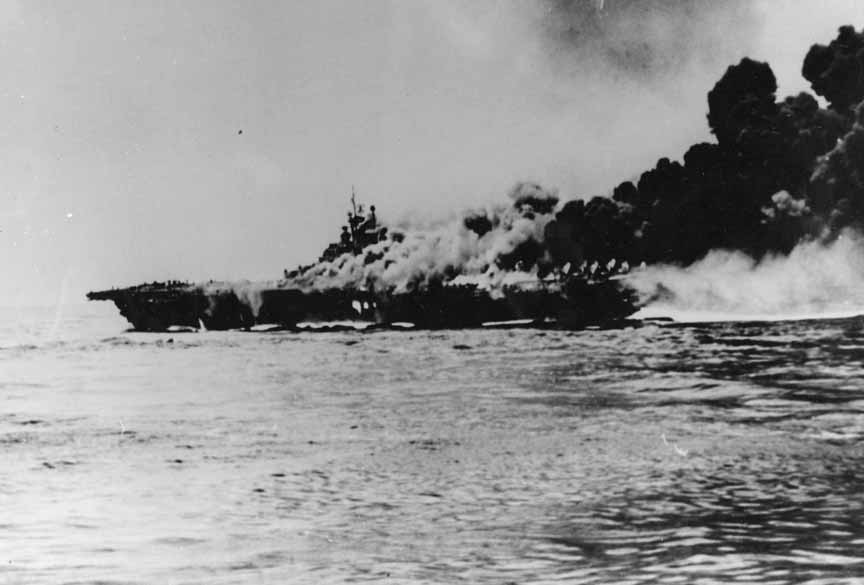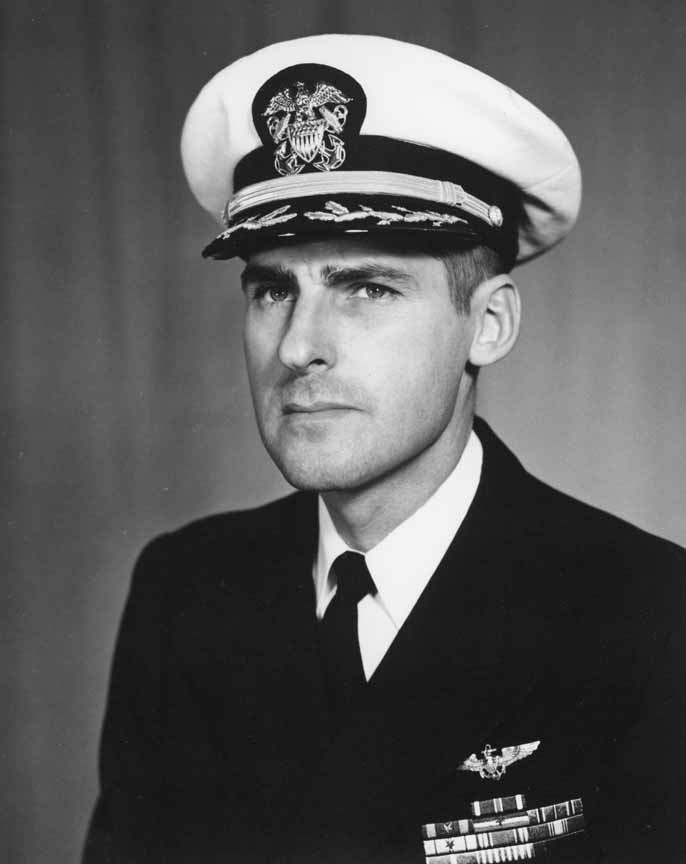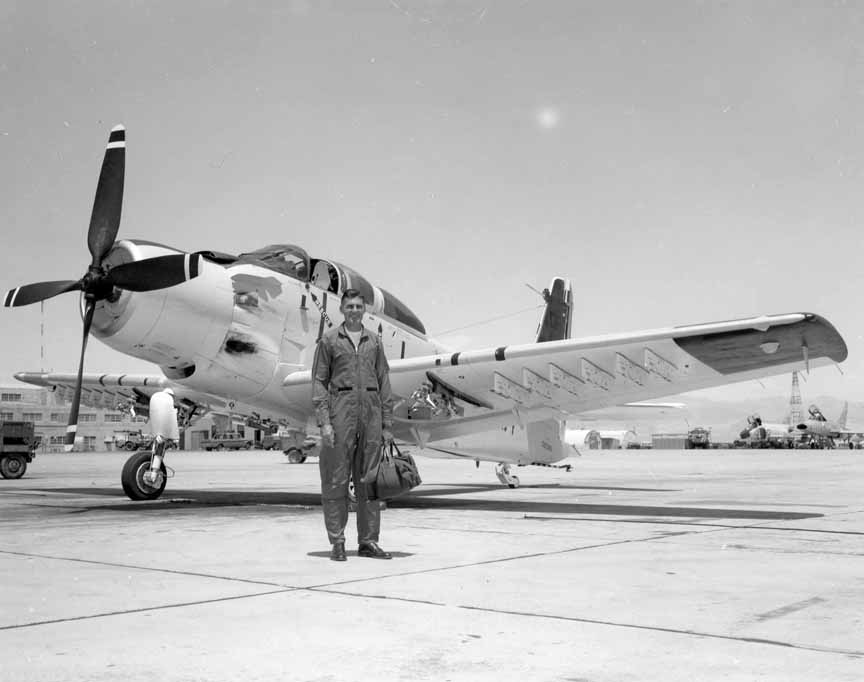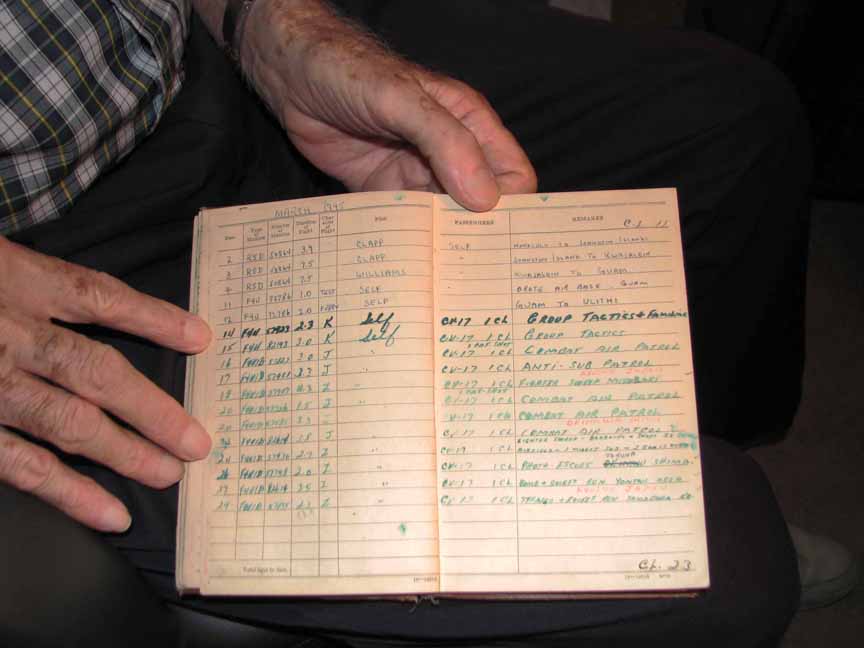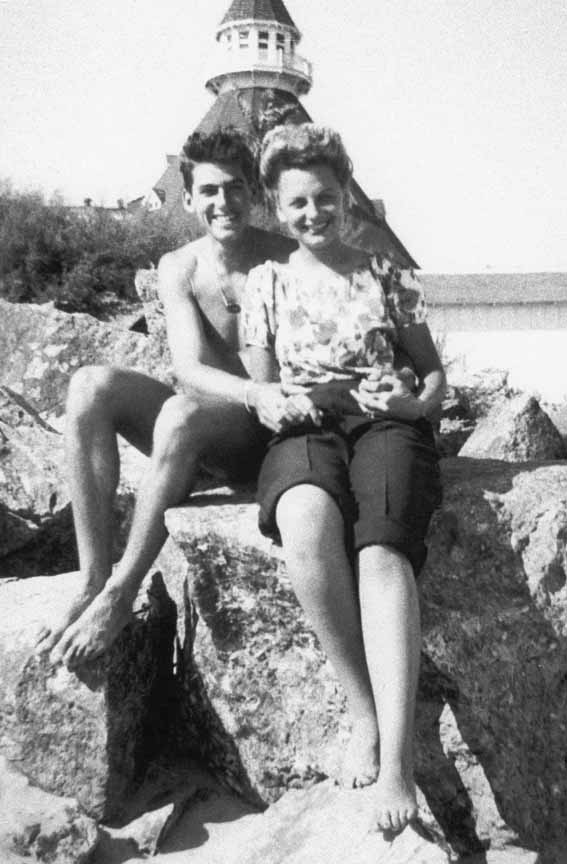STAN ABELE – SURVIVOR, HERO, ROMANTIC:
Poster Boy For Valentine’s Day at Age 90
Stan Abele, on a training mission and at the stick of a Corsair. Photo courtesy Stan Abele.
As part of the USS Bunker Hill’s task force somewhere between Okinawa and Japan, Stan Abele was preparing for a mission. It was May 11, 1945. As he stood on the flight deck preparing to board his plane, and with no warning, a low-flying Kamikaze suicide plane swept over him. The Kamikaze clipped the upraised wings of Stan’s plane and crashed into four other planes next to him on the fantail, destroying every one of them and killing the pilots inside. The entire flight deck of the USS Bunker Hill was filled with bombers, fighter planes and torpedo planes, all loaded and ready for takeoff into battle.
A second Kamikaze hit 30 seconds later and its bomb blew up killing everyone in the ready room amidships where Stan had just left. Everywhere planes were exploding. Rockets and munitions on the stunned American planes were detonating and the entire flight deck and island of the carrier were on fire. It was a raging inferno, a flaming holocaust, and everywhere was the stench of burning fuel and human flesh.
Six months earlier, Ensign Stan Abele and his squadron were billeted at the Hotel del Coronado for several months of flight training. Obviously, the living arrangements were off the charts in elegance and décor. At that time the Del was also the place to be for single women looking to catch a young pilot a popular pursuit in the early years of World War II.
Stan Abele (left), his best friend Gene Powell, and another friend pose for this happy go
lucky photo in the courtyard of the Hotel del Coronado. Within six months,
Stan would be the only one left alive. Photo courtesy Stan Abele.
“There were girls galore,” said 90-year-old Stan Abele, as an irresistible smile crept across his venerable face. He and his best friend, Gene Powell, were roommates at the Hotel Del. Photographs capture them in their pressed uniforms standing in the hotel’s courtyard, or at a dining room table surrounded by women and a dance floor. Now, after the Kamikaze attack on the USS Bunker Hill, Stan was one of the only survivors from those small black and white photos.
The Kamikaze attack happened so fast. Why Stan was spared that day is anyone’s guess. But after the planes hit the flight deck of the Bunker Hill, Stan’s adventure was only just beginning.
In an effort to get away from the fires and exploding munitions, Stan and his mechanic went out onto the catwalk of the ship that extended from the fantail along the side – 15 or 20 other survivors soon joined them. Every hatchway they attempted to open accosted them with toxic fire and billowing smoke (smoke inhalation was the cause of most deaths that day).
The once looming and powerful USS Bunker Hill, before the disastrous Kamikaze attack of May 11, 1945.
Photo courtesy Stan Abele.
“We kept thinking someone was going to rescue us, but it didn’t happen,” recalled Stan. The attack took place about 10 a.m. and by noon they could no longer breathe on the catwalk. Out of desperation the stranded pilots and mechanics jumped overboard, landing 60 feet below in the cold Pacific Ocean only to watch as their battered and burning ship steamed on.
“Funny what you remember at times like that,” said Stan. “I remember losing a shoe when I hit the water. I remember being angry at being left out there in the ocean. And I remember looking at my watch at 5 p.m. and thinking it would be dark soon and we would be goners once the sharks found us. The task force was nowhere to be seen. The Bunker Hill kept steaming on at 20 knots and now we could barely see her smoke on the horizon.”
The aircraft carrier USS Bunker Hill, after the Kamikaze attack in 1945. This was the sight Stan Abele and more than a dozen others saw as the ship, their ship, steamed away from them as they bobbed helplessly in the Pacific Ocean.
Photos courtesy Stan Abele.
After five hours in the water shock began to set in. All of a sudden, when all hope seemed lost, the men rose to the crest of a swell and sighted the mast of a destroyer. It had been working its way back along the carrier’s wake and picking up survivors. Just as darkness set in Stan and the others were pulled from the ocean and transferred back to their ship the following day.
Amazingly, within 24 hours, all fires had been extinguished on the carrier. At one point the water had built up on the hanger deck to such an extent that it threatened the stability of the ship. The captain got on the horn and told everyone to hang on as he put the ship hard over to starboard and all the water went over the port side a maneuver that probably saved the ship.
“When I came back on board, I wasn’t prepared for what I saw. The hanger deck had hundreds of dead bodies on it covered with canvas tarps.”
Hard to believe this intact cowling and propellor belong to Stan Abele’s airplane. Before the Kamikaze attack, he was standing next to it. Of all the pilots and planes in that squadron, Stan and his plane’s cowling were somehow spared. Photo courtesy Stan Abele.
“When I came back on board, I wasn’t prepared for what I saw,” remembered Stan. “The hanger deck had hundreds of dead bodies on it covered with canvas tarps. They were being readied for burial at sea. A tractor was pushing wrecked airplanes over the side.”
Greeting the returning pilots and sailors was a mass of charred and twisted wreckage. The wooden flight deck was unrecognizable. “I tried to find my best friend, Gene Powell, and went from body to body before I just couldn’t take it any more,” said Stan. “I lifted up one tarp and the poor fellow was so badly burned that his arm fell off.”
Gene had been in the ready room during the attack. He was on the previous flight and shot down a Kamikaze. “I remember saying to him, I’m going to get one too, you hear’?,” said Stan. That was the last time Stan saw his best friend. He never found Gene’s body but his name is listed among the casualties from that tragic day when 392 died (or went missing) and another 264 were wounded.
A war-hardened Commander Stan Abele left the Navy to spend more time with his wife. They traveled the country towing a trailer behind their car. It was, he remembers, the best time of their lives. Photo courtesy Stan Abele.
Flying and tennis were the two sacred aspects of Stan’s life. He wanted to be the best at both, and came pretty darn close to that goal. Photo courtesy Stan Abele.
The attack on the Bunker Hill became one of the greatest US Naval disasters a ship was ever to survive. And yet, during her brief WWII Pacific campaign, the USS Bunker Hill and her pilots were responsible for shooting down 475 Japanese planes.
Today Stan, who turns 91 in June, has given up flying and given up his tennis (he held a USPTA ranking as the second best doubles team in the Southeastern United States). He splits his time between his home in Alpine and a condo in Coronado. He looks forward to his time at the Midway Carrier Museum as a volunteer docent. There, he shares stories about friendships, about fighting for one’s country, about personal loss and survival. But he also shares the joy of camaraderie and the happy moments.
Coronado’s Stan Abele, survivor of the Kamikaze attack on the USS Bunker Hill in WWII. Today he
turns those memories into history lessons for visitors at the Midway Museum, where he is active
as a tour guide and volunteer docent. Photo by Joe Ditler.
This is the log book Stan faithfully kept up during WWII. In it are details about every mission he flew. Photo by Joe Ditler.
Stan is a gifted storyteller, and if the truth were known, the telling of these stories has probably been the best medicine over the years in helping him to put May 11, 1945 behind him. When asked why he survived and so many others didn’t that fateful day, he shakes his head and just says, “Lucky, I guess.”
The story of Stan’s time as a young pilot in training in Coronado is documented in one book about the Hotel del Coronado, and he appears on the cover of another, “A History of Romance at the Hotel del Coronado.”
This photo is currently being used by the Hotel del Coronado on a cover of one of their books, and to
promote romantic destinations during Valentine’s Day. Stan often says that his time spent billeted
at the Hotel Del was, “The best part of WWII for me.” Photo courtesy Stan Abele.
That same cover shot appears on the page A-2 of the February 3, 2013 edition of the San Diego Union-Tribune. The photograph is being used to promote romantic destinations at the Hotel del Coronado, which makes Stan Abele, at 90, a contender for the world’s oldest poster boy.
This story was produced by Joe Ditler and Part-Time PR.
If you have a story to tell, contact us at:
[email protected], or (619) 435-0767
Part-Time PR specializes in obituaries, living-obituaries
(such as the story you just read), press releases and more.




